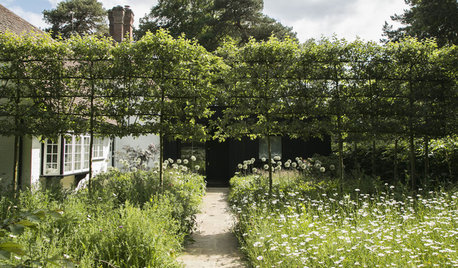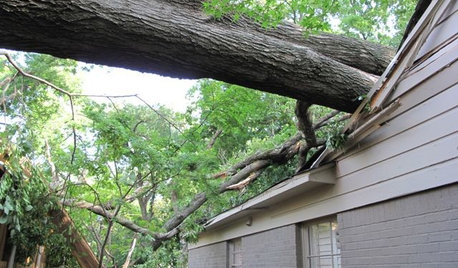Major Rabbit Damage on Apple trees how to fix it!
mjmarco
14 years ago
Related Stories

GARDENING AND LANDSCAPINGCrab Apple Trees Set Off a Stylish English Courtyard
A structure of pleached crab apple trees, bordered by a wildflower meadow, links a minimalist addition to an old house in Buckinghamshire
Full Story
HOUZZ TOURSMy Houzz: Twister Damage Sparks a Whole Ranch Remodel
A Dallas couple transforms their traditional rambler into a bright, family-centered haven after a tornado
Full Story
GARDENING GUIDESHow to Fix Bare and Yellow Lawn Spots
Restore your turf’s good looks by reseeding unsightly patches
Full Story
LIFEHouzz Call: Show Us Your Nutty Home Fixes
If you've masterminded a solution — silly or ingenious — to a home issue, we want to know
Full Story
HOUSEKEEPINGWhat's That Sound? 9 Home Noises and How to Fix Them
Bumps and thumps might be driving you crazy, but they also might mean big trouble. We give you the lowdown and which pro to call for help
Full Story
REMODELING GUIDES10 Home Fixes That Require a Pro
With some home improvements, your best tool might be the phone. Here are some areas in which it pays to make the call
Full Story
FALL GARDENING11 Trees for Brilliant Fall Color
Give your landscape the quintessential look of autumn with the red, orange and yellow leaves of these standouts
Full Story
LANDSCAPE DESIGNThe Unparalleled Power of Trees
Discover the beauty and magic of trees, and why a landscape without them just isn't the same
Full Story
TREES7 Deer-Resistant Flowering Trees to Plant this Fall
If you live in a neighborhood with roaming deer, consider these beautiful trees that won't tempt hungry guests
Full Story
GARDENING GUIDESHow to Keep Your Citrus Trees Well Fed and Healthy
Ripe for some citrus fertilizer know-how? This mini guide will help your lemon, orange and grapefruit trees flourish
Full Story



brandon7 TN_zone7
thisisme
Related Discussions
Rabbit Damage
Q
How can I keep raccoons away from my apple tree?
Q
Rabbit damage on apple whip - need advice
Q
Check trees and shrubs for rabbit damage
Q
mjmarcoOriginal Author
thisisme
mjmarcoOriginal Author
alan haigh
eric_wa
Konrad___far_north
brandon7 TN_zone7
alan haigh
brandon7 TN_zone7
thisisme
grapeguy
brandon7 TN_zone7
alan haigh
mjmarcoOriginal Author
brandon7 TN_zone7
alan haigh
eric_wa
alan haigh
eric_wa
brandon7 TN_zone7
alan haigh
brandon7 TN_zone7
alan haigh
mjmarcoOriginal Author
eric_wa
alan haigh
mjmarcoOriginal Author
eric_wa
alan haigh
eric_wa
mjmarcoOriginal Author
mjmarcoOriginal Author
Konrad___far_north
mjmarcoOriginal Author
mjmarcoOriginal Author
thisisme
mjmarcoOriginal Author
rabidchild
mjmarcoOriginal Author
clarkinks
clarkinks
mjmarcoOriginal Author
mjmarcoOriginal Author
mjmarcoOriginal Author
mjmarcoOriginal Author
rabidchild
mjmarcoOriginal Author
Jolene Laughlin